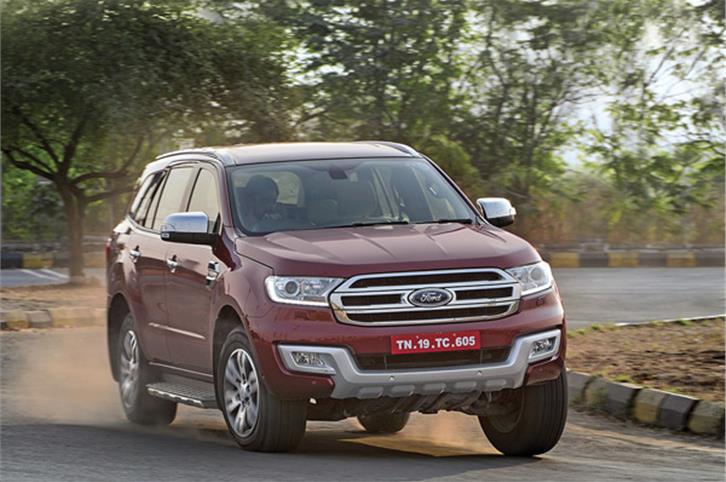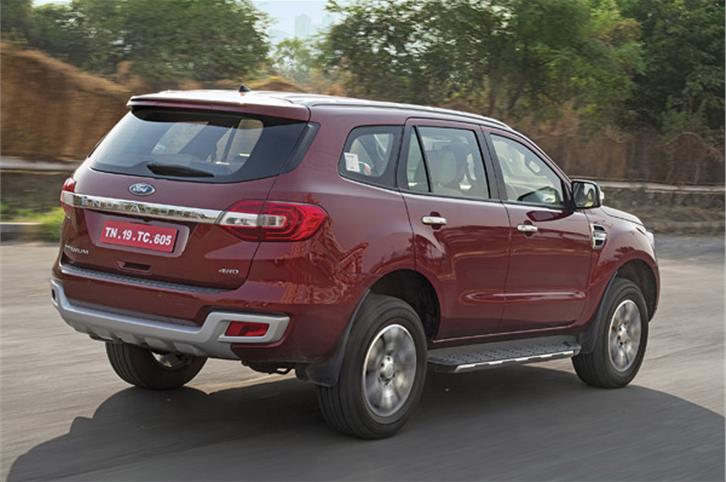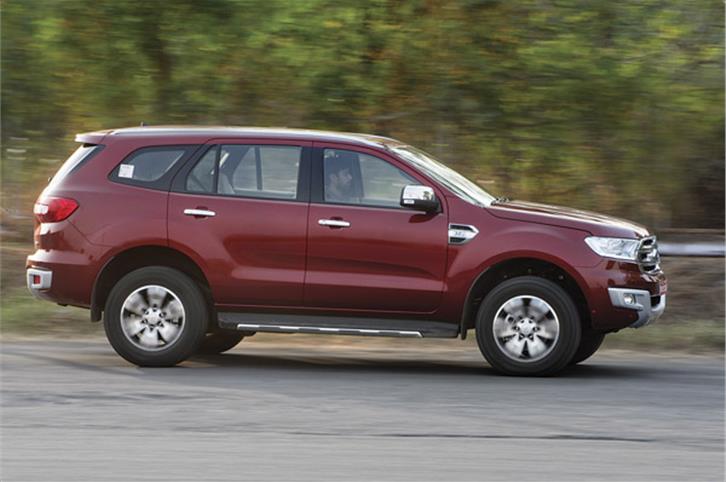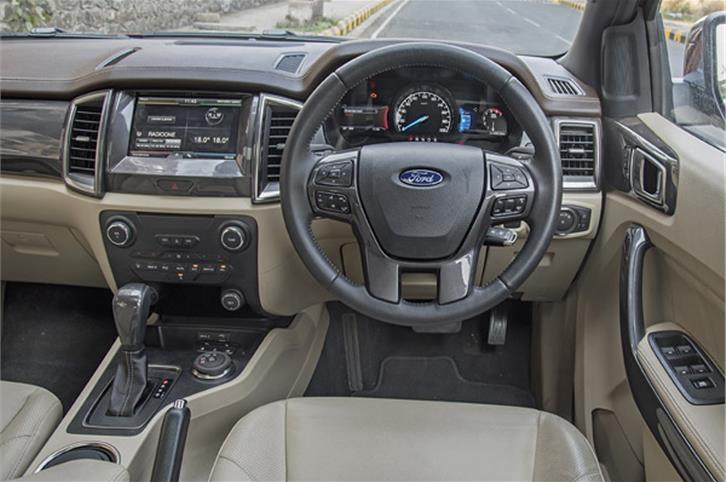New Ford Endeavour review, road test
Read the New Ford Endeavour review, road test from Autocar India; Ford's true-blue SUV is reborn and it's the best Endeavour yet.
Published on Feb 08, 2016 12:50:00 PM
1,11,088 Views
Follow us on

Light steering makes the bulky Endeavour less cumbersome in the city.


Interiors are luxurious, dash looks simple yet elegant. Steering wheel feels great to hold.
The Endeavour is as massive as Africa and is also very menacing to look at. Details like the huge wheel arches, meaty scuff plates and the long, sculpted bonnet (which will be at chest height for most) give it strong road presence. The large, twin-slat chrome grille is one of the standout features in the front and it completely dwarfs the projector headlamps. Despite its gargantuan proportions, however, the Endeavour slips through air with an impressive claimed drag co-efficient of 0.38. This aerodynamic efficiency is down to an aero-efficient frontal area and the sharply raked A-pillar which also allows it to look a little less bulky. Then there are the large wing mirrors that go nicely with the bulky SUV shape and also offer good rear visibility. On the flanks, there’s a badge to denote which engine and gearbox the car uses, and despite the absence of the now somewhat clichéd body cladding, its size alone allows it to look more than macho enough. The 18-inch wheels look proportionate to the car, but even 19-inchers wouldn’t have looked out of place in those massive wheel wells. The styling at the rear isn’t as dramatic as the front; the large chrome shroud with ‘Endeavour’ embossed on it catches the eye, but the wraparound tail-lamps look small and simple. Overall, the Endeavour is a welcome departure from the plain and boxy look of its aged predecessor, and manages to appear modern and sophisticated without sacrificing that macho bulk you expect from such a vehicle.
The chassis sits on an independent coil-over-strut suspension in the front and Ford engineers claim to have tuned it differently for the 2WD and 4x4, the difference in kerb weight, centre of gravity and torque distribution all taken into account. At the rear, the use of coil springs and having the rear shock absorbers mounted outboard of the frame rails are big changes. These aid better stability and comfort on broken roads. The Endeavour also features a Watt’s Linkage instead of the commonly used Panhard rod. The Watt’s Linkage is designed to minimise lateral movement of the rear axle, which in turn gives the car better dynamics and stability. It’s evident that a lot of engineering muscle has gone into making it better on and off the road than its predecessor.
Copyright (c) Autocar India. All rights reserved.




Comments
Member Login
Personal Details
No comments yet. Be the first to comment.